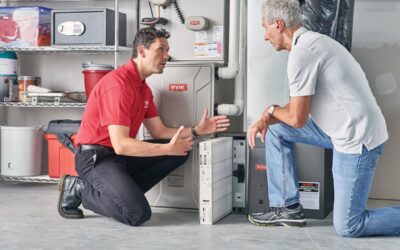If you recently installed a heat around your home, some of the most pressing concerns while trying to understand the thermostat might be the em heat button. You need to know what it represents, how it works and when to use it. However, to gain a better understanding of what is emergency heat, you first need to understand how your heat pump functions as this play a significant role in determining why and when to use the emergency button.
Heat Pump
Ideally, a properly functioning heat pump plays the role of cooling the house during the hot seasons by pumping in cool air from outside environment. It also heats the house during the cold seasons by directing warm outdoor air into the house. However, when temperatures fall making it impossible to trap in hot air from the surrounding environment, a heat pump shifts attention to a secondary heating source, usually located in an indoor unit such as a furnace.
The temperatures may at times fall to extreme levels thus rendering the heat pump, also known as the first stage heat source, ineffective in keeping you warm. In such a case, the heat pump automatically taps to your preferred emergency heat source.
What is EM heat?
Your heat pump is said to be running on emergency heat if it solely relies on its second stage heat source to keep your house warm. The secondary source may refer to electricity, gas or even oil. In most cases, a qualified heating and cooling contractor will first consult you before tapping onto any heat source around the house and using it as secondary for your heat pump.
What is EM heat and how does it work?
Almost every heat pump has a strip of electric coils that you can heat up using either of the secondary heat sources. This heat is then pumped to all the connected rooms within the house with the temperatures being controlled by the thermostat. Ideally, the only difference between the first and second sources of heat and how each works lies in the heat source and not the amount of heat produced or how it is controlled.
Nonetheless, remember that there is a reason your thermostats have separate triggers for the standard and emergency heat triggers. It goes to show that the thermostat works on whichever command you direct it to observe. This implies that by switching on the emergency heat on, you are instructing heat pump to bypass the first stage source of heat and only consider the secondary sources, whether oil, electric or gas. Therefore, until you turn off the emergency heat, you will be ignoring any improvements in temperature, especially if your thermostat can’t detect improvements in temperature while the em heat status is still active.
Why use the emergency heat?
During summer, you might notice that your thermostat rarely makes a sound even though it still delivers excellent results. However, as it struggles to keep your home warm, it might keep running. But this still poses no reason for you to turn on the emergency heat. The heat pump was particularly designed to tolerate continuous runs for long hours. Therefore, resist the temptation of switching the heat sources, as long as the heat pump works.
Only consider changing the heat sources when temperatures drop below 40°F as there is no longer warm air to pump into the house. You can also consider switching to emergency heat if your heat pump fails to work. Such fails are common and may be caused by such factors as internal defects or if snow or other debris fall on the outdoor heating unit. In such cases, you may consider using the secondary heat sources as you wait on the HVAC repair contractor.
Effects of using the emergency heat
Just like the name suggests, these secondary heat sources should only be sought after in emergency situations. In almost every case, running an emergency heating around the house is quite expensive, especially when relying on an electric back up. The longer the emergency heat runs, the higher the electricity bills you accumulate.
How can you use it correctly?
If you must use the emergency backup for one reason or another, it is highly advisable that you consider using either gas or oil as they are less expensive compared to electricity. Nonetheless, with all other factors constant, saving on energy costs during the cold season and avoiding the emergency systems starts with a properly maintained heating and ventilation system. Implement every measure that ensures that your heat pump is well maintained and efficiently working before the cold season.
A proper understanding of what is emergency heat starts by knowing the essential functions of a heat pump. Through such an understanding, you learn that you don’t just flip the emergency switch when the temperatures start falling, you learn to give the heat pump time to adjust to these changes and only turn on the emergency heat if the pump is destroyed or just won’t work. Most importantly, the emergency heat should only be temporary and only meant to help you stay calm as you wait for the HVAC repair contractor.



